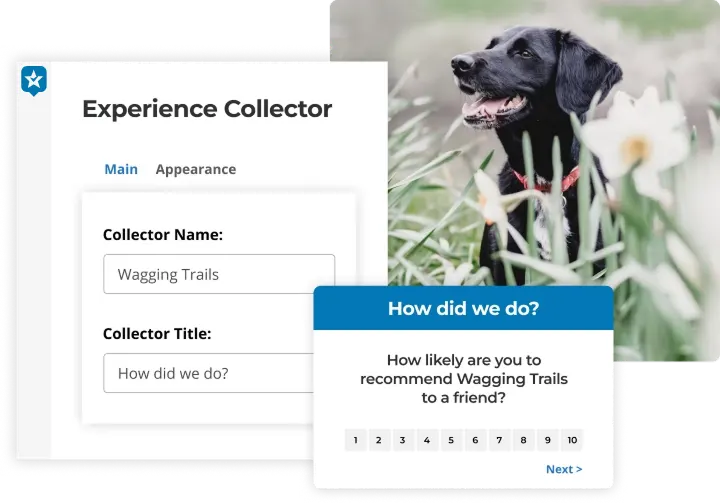Which of these trends that dominated online shopping in 2024 stay? While some AI-powered personalization and the rapid delivery system may continue to evolve, others may wane into the background as new technologies take the forefront and consumer preferences change.
As we move toward 2025, ecommerce is about to see some seismic shifts that will fundamentally alter the way businesses connect with their customers.
The following are ten major trends that will take over the future of e-retailing:
1. Influx of AI in Customer Interaction
Artificial intelligence has now become an integral part of modern-day ecommerce. About 80% of retail and online companies are already using, or intend to use, AI chatbots in the near future. Chatbots will manage customer support for 25% of companies by 2027. In other words, AI has gradually become imperative in the management of customer interactions.
To ecommerce business owners, AI tools like chatbots mean faster, more efficient customer service: They can manage more inquiries without needing additional staff to handle common questions and free teams to work on more complex inquiries.
Other uses of AI in ecommerce, beyond customer service, include the following:
Personalized recommendations: AI research on user navigating habits provides a choice of merchandise customized to each taste, thereby increasing sales conversion.
Automate review management: Tools like RaveCapture's AI Review Responder save time crafting instant and considerate responses to customer reviews, letting you show customers you care without the headache of manually responding.
2. Sustainability as a Major Purchase Driver
Sustainability has come a long way—from a corporate responsibility buzzword to a significant driver of consumer behavior. An increasing number of shoppers seek eco-friendly brands that align with their values.
This trend is good for the environment and makes sound business sense. People are rewarding businesses with their purchases for doing things the right way, benefiting both the planet and the bottom line.
Ecommerce stores can showcase their commitment to sustainability in the following ways:
Eco-Friendly Packaging: Highlight customer reviews that mention how they appreciate your use of recyclable or biodegradable packaging materials. Customers love companies that minimize waste, and positive reviews regarding packaging are common.
Energy-Efficient Processes: Feature reviews discussing your efforts to reduce energy consumption by using renewable sources or minimizing overall usage, building trust with eco-conscious consumers.
Ethics in Product Sourcing: Encourage reviews that mention fair-trade certifications or responsible sourcing practices. With more customers motivated by the ethical treatment of workers and sustainable farming or production, this trend will continue to grow.
Carbon-Neutral Shipping Options: Emphasize reviews where customers appreciate your offering of carbon-neutral shipping, a rising trend in eco-friendly ecommerce.
3. Shift to Mobile-first Shopping Designs
The definition of mobile-first shopping is the design of online stores, keeping in mind that smartphones are the first devices. As more and more users tend to shop through their phones, it is high time online retailers put a great emphasis on mobile.

Due to the increase in mobile commerce, a huge amount of ecommerce sales take place, and as expected, users desire speed and intuitive browsing for purchases directly from their phones.
Here are a few practical pointers for ecommerce online store owners who desire to align themselves with this trend:
Optimized Mobile Design: First, your ecommerce platform should be mobile-friendly. Hence, it implies that the website should load faster, with simple navigation and responsive layouts that adapt to on screen size. A seamless user experience should be considered very important in retaining customers and increasing mobile sales.
Personalized product recommendations: Integrate various AI-powered tools that go a long way in recommending products to customers based on their browsing and buying history, along with their expressed preferences. As a matter of fact, 49% of smartphone users just love shopping on those sites or apps that recommend brands or products based on their previous activity. It is this amount of personalization that keeps your customers engaged, hence driving repeat purchases.
Mobile-first checkout: Make sure the checkout process is seamless and swift. Your ecommerce conversion rates will improve, and cart abandonment will be reduced because fewer steps and options to pay on mobile mean streamlined conversion.
The switch to a mobile-first approach benefits not only the users but also maximizes ecommerce sales since more and more end-consumers consider their phones to be the preferred method of online shopping.
4. Augmented Reality and Virtual Try-Ons
Augmented reality in ecommerce lets customers envision how a product would look in their real environment before buying. This immersive shopping experience overlays digital elements into the physical world through a phone or other device, making it one of the biggest assets for ecommerce businesses. On the other hand, Virtual Try-Ons allow customers to "try on" apparel, cosmetics, and similar items without visiting a physical store. While both are innovative, Virtual Try-Ons focus on personal experiences, such as trying products on the body, while AR applications mainly extend product placement into real life.

AR and Virtual Try-Ons bring more value to ecommerce products that benefit from personalization and detailed product visualization. Here are the top product categories using this technology:
Furniture: AR enables customers to place items like chairs or tables in their living spaces to ensure the size, color, and style fit before purchasing.
Clothing and accessories: Virtual Try-Ons show customers how garments or sunglasses will look on them, reducing return rates from sizing issues.
Beauty products: Customers can virtually try on makeup shades to see how they'll look on their skin tone, leading to more confident purchases.
Home décor: AR helps customers visualize décor pieces, such as wall art and lighting, in their homes.
Partnering AR or Virtual Try-Ons with user-generated content (UGC) and reviews collected through tools like RaveCapture can work wonders. Reviews full of AR experiences and feedback from satisfied customers provide insight for prospective buyers, helping them make more informed purchase decisions.
5. Subscription-Based Models and Loyalty Programs
Subscription-based models have become a dominant trend in ecommerce, offering convenience for customers and predictable income for businesses. Companies like Dollar Shave Club and HelloFresh have built successful subscription services that deliver products regularly, eliminating the need for customers to reorder frequently. Loyalty programs can support the growth of these models by offering benefits such as:
Exclusive perks: Discounts, early access, or free shipping keep customers returning for more.
Increased engagement: Loyalty programs encourage subscribers to continue interacting with the brand, reducing churn and building long-term relationships.
Positive reviews reinforce these loyalty-driven relationships, while UGC plays a similar role. Reviews help build trust—loyal customers sharing their positive experiences gives potential customers confidence in subscribing. UGC influences decisions, as customer testimonials provide social proof, encouraging others to commit to recurring purchases.
Tools like RaveCapture collect loyalty-related feedback, helping businesses understand what drives customer engagement. By analyzing reviews from loyal customers, businesses can improve product recommendations, enhance the online shopping experience, and build stronger connections.
6. Voice Search and Smart Speakers
With consumers using smart speakers like Amazon Alexa and Google Home to find and buy products, voice commerce is on the rise. Here's how voice search impacts ecommerce:
Conversational phrases matter: Voice searches often include questions or longer, more casual phrases, which means focusing optimization efforts around natural-sounding phrases can help capture traffic from voice search users.
Voice-optimized reviews drive traffic: Reviews that answer common customer questions or contain phrases that shoppers might speak out loud are more likely to appear in voice results. This means you're more likely to get found by customers searching for product recommendations or user experiences via their smart speakers.
RaveCapture's review schema makes this even easier by embedding rich snippets directly into product reviews:
Improved visibility: Rich snippets make your reviews more attractive to search engines, raising the likelihood that your reviews will show up in voice search results.
Boost in traffic: With optimized reviews, your ecommerce store becomes more accessible to voice search users, extending your reach and building trust through easily accessible customer feedback.
7. Rise of Social Commerce as an Ecommerce Trend
People don't just discover products on these platforms—they actually buy products online directly from Instagram, Facebook, and TikTok. This shift makes life easier for brands by allowing them to find their shoppers in a place where they already spend so much time.
At the heart of this trend is user-generated content, which acts as today's version of social proof. Potential customers trust reviews, photos, and experiences shared by other users rather than polished ads.
RaveCapture enables businesses to harness this power by seamlessly sharing reviews across social media platforms like Facebook, Instagram, and Twitter. The direct integration makes your reviews visible quickly where they matter most, amplifying your social commerce strategy in an instant. By sharing real customer feedback, you create trust and encourage more participation, boosting your online sales and building a loyal community around your brand.
8. Personalization and Data-Driven Insights
Brands are expected to customize their experiences for customers to match shoppers' preferences, which helps increase engagement and drive sales.
For instance, if a customer frequently purchases skincare products, personalized product recommendations or reviews focusing on those particular items can have a significant impact on influencing their decision to make the purchase.
In this process, personalized reviews play a crucial role. New customers are more likely to trust feedback from buyers with similar tastes and preferences. Imagine a shopper browsing for a new pair of running shoes and reading reviews from others that align with their running style or foot type. That personalized insight could be the difference in making the sale.
Tools like RaveCapture make it easier for businesses to automate and personalize review collections. With seamless integrations across major ecommerce platforms like WooCommerce and Shopify, RaveCapture automates the review request process, ensuring timely feedback.
9. Omnichannel Integration as an Ecommerce Trend
With more consumers switching between online and in-store shopping, omnichannel integration is critical for ecommerce businesses. It ensures continuity in the customer experience at every touchpoint, whether customers browse products online, buy them in-store, or interact via mobile apps. Smooth transitions between digital and physical spaces enhance convenience and boost brand loyalty.
Omnichannel integration offers several advantages for businesses:
Synchronized inventories: Customers enjoy real-time visibility of product availability across all platforms, reducing frustration from stock inconsistencies.
Personalized offers: Custom promotions can be shared across multiple touchpoints, creating seamless experiences for customers shopping online or in-store.
Customer reviews further build trust across these channels. When feedback is available on websites, apps, and even in-store displays, it reassures customers about the quality of their purchase, regardless of where they shop. Adopting an omnichannel approach not only increases online sales but also provides a consistent and engaging customer experience that appeals to today's consumers.
10. Growth of Zero-Party Data
Zero-party data is data that consumers provide on their own initiative, such as preferences, interests, or specific product feedback. Unlike third-party data collected through tracking, zero-party data originates directly from the consumer, making it a more reliable and transparent source for ecommerce companies to gain insights while offering personalized experiences.
Because privacy concerns are growing, zero-party data has become more valuable for personalized marketing strategies. When customers willingly share their information, businesses can use it to offer targeted product recommendations and marketing that resonate with individual tastes and preferences, driving both online sales and customer loyalty.
RaveCapture enhances this process with its Net Promoter Score (NPS) tool. By integrating this feature into review forms, businesses can ask specific questions about customer satisfaction and brand loyalty.

With this tool, collecting zero-party data has become easier, enabling companies to tailor their offerings to the audience and improve the overall customer experience based on direct, authentic input from their customers.
Closing Thoughts
Looking toward 2025 and beyond, ecommerce will continue evolving rapidly, with several key trends shaping the future:
AI-powered customer conversations and personalized suggestions at scale
Sustainability as a purchase driver
Mobile-first shopping dominance
AR and Virtual Try-On for immersive experiences
Subscription models and loyalty programs grow in adoption
Voice search and smart speakers dictate commerce
Social commerce and UGC proliferate
RaveCapture will help businesses stay ahead of these trends by simplifying the management of customer reviews, automating feedback collection, and optimizing user-generated content for multiple platforms. Explore RaveCapture's review management tools to see how you can leverage these trends for your ecommerce business.



